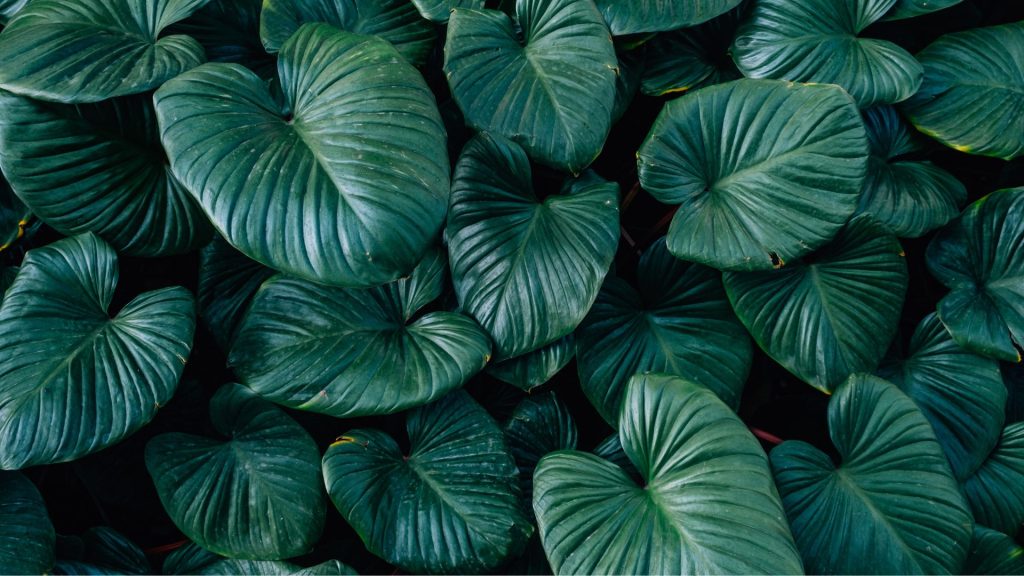If you are fed up with the classic spathiphyllum and dieffenbachia, and you are ready for more complex care for the sake of decorativeness, you should look at the spectacular large-leaved plant – Homalomena. Huge leaves in lush bushes stand out pleasantly against the background of the room classics.
Homalomena is a spectacular evergreen perennial with large leaves, belonging to the Araceae family. It surprises with its compactness, about 25 cm high, but thanks to its huge leaves, the plant seems bulky. The rosettes are dense. This perennial is native to Asia and South America and grows mainly in tropical latitudes. When Homalomena is grown indoors, the flowering of this plant can be seen infrequently, and the inflorescence must be cut off immediately after it appears.
Homalomena comes in a wide variety of colors, from the usual dark green to red, silver, and even almost black! Let’s find out about the most popular types.
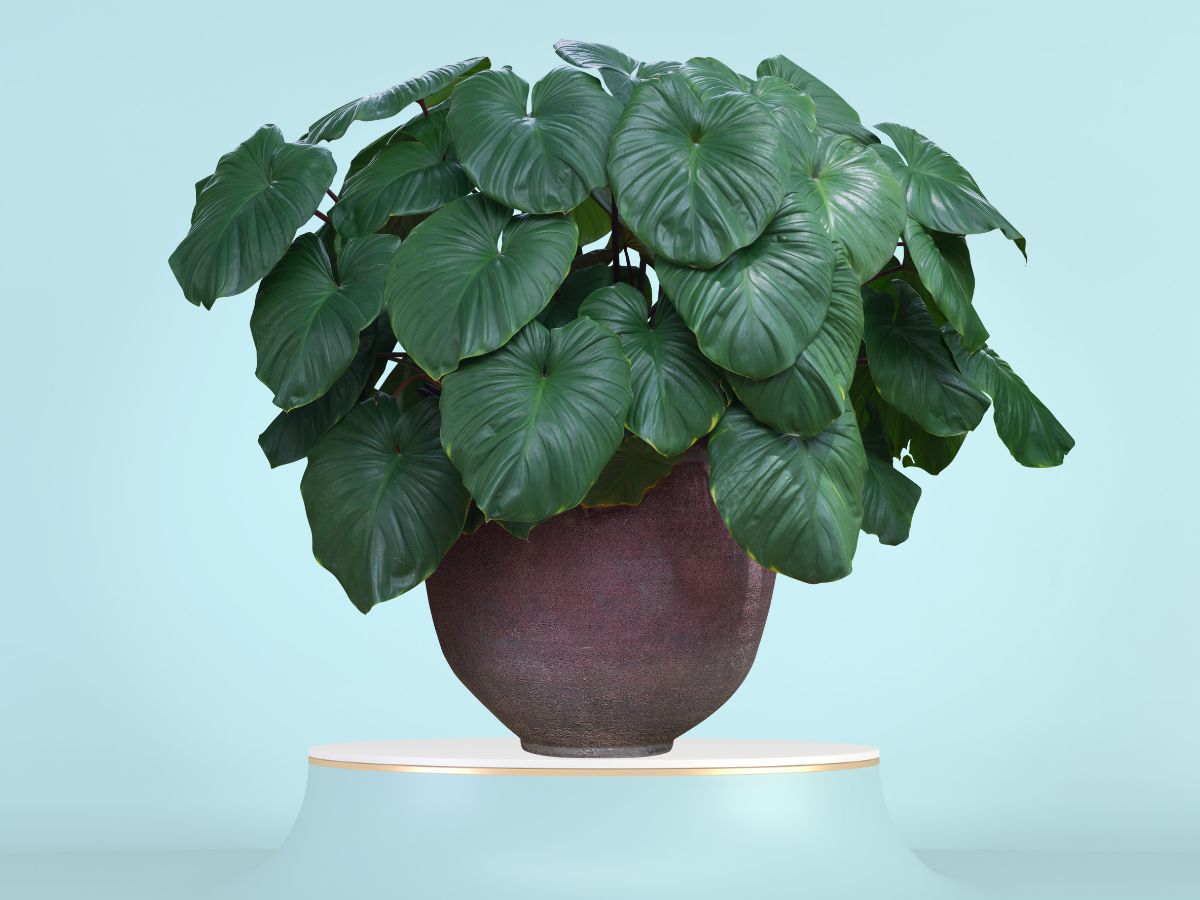
What is Homalomena Plant?
Taxonomic Classification of Homalomena Plant
- Family: Araceae
- Genus: Homalomena
- Species: Various species, including Homalomena wallisii, Homalomena rubescens, Homalomena sekadauensis, etc.
- Common names: Heart of Flame, Queen of Hearts, Homalomena, etc.
Physical Characteristics and Morphology of Homalomena Plant
- Leaves: Large, glossy, and heart-shaped leaves with prominent veins. Leaf color varies among species, ranging from dark green to variegated patterns of green, yellow, or red.
- Stem: Short, erect or creeping stems depending on the species, with a fleshy texture and usually covered with leaf sheaths.
- Flowers: Homalomena plants produce small, inconspicuous flowers typically hidden within the leaf sheaths, and are usually not the main ornamental feature of the plant.
- Inflorescence: Spadix, a cylindrical structure, surrounded by a spathe, a modified leaf-like structure, which may have different colors and patterns.
- Roots: Fibrous roots that grow from the base of the stems and spread in the potting medium.
Variations among Species and Cultivars
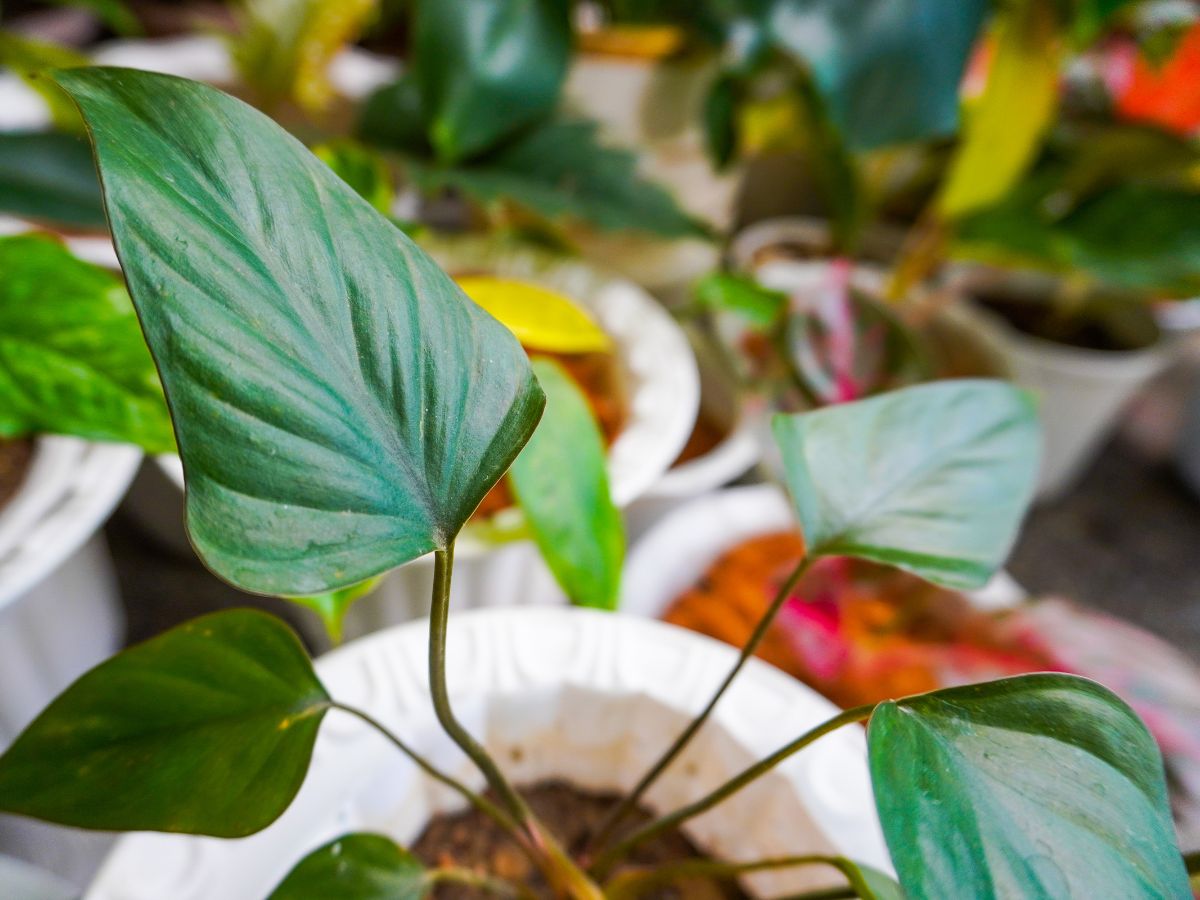
- Leaf size and shape: Different species and cultivars of Homalomena can have varying leaf sizes and shapes, ranging from small to large, and from heart-shaped to lanceolate or elliptical.
- Leaf coloration: Leaf coloration can vary greatly among species and cultivars, with variations in shades of green, yellow, red, and variegated patterns.
- Growth habit: Some Homalomena species have an upright growth habit, while others may be creeping or trailing.
- Spathe coloration: The spathe, which surrounds the spadix, may have different colors and patterns, adding to the ornamental appeal of some Homalomena species and cultivars.
Homalomena Varieties
It is not uncommon to see wild Homalomena species such as wallisii or rubescens in tropical greenhouses or gardens.
Homalomena Wallisii
The length of large variegated Homalomena leaf plates is usually about 20–25 centimeters, while their red petioles are relatively small, reaching a maximum of 12 centimeters. Since the large leaves are too close to each other, the plant looks like a compact bush. The outer side of the leaves is light green, while decorated with dark green spots of various shapes, and the downside is reddish.
Homalomena Rubescens
This plant can grow up to 100 cm in height. Large heart-shaped leaves have a solid green color and are part of large rosettes. The petioles are typically pale red. This species has several more interesting subspecies. As an example, Homalomena rubescens variegated, which has heart-shaped leaves with an unusual pattern of white and yellow spots on the leaf blade, and Homalomena rubescens variegated pink (or Homalomena ‘Pink Splash’) is very similar to Homalomena rubescens variegata, only the pattern differs in that these spots are delicate color pink.
Please note that Homalomena rubescens are considered quite rare and not easy to find.bHowever, there are many other, more affordable options. These include hybrid varieties, which differ markedly in color, pattern, shape, and size of leaves.
Homalomena Emerald Gem
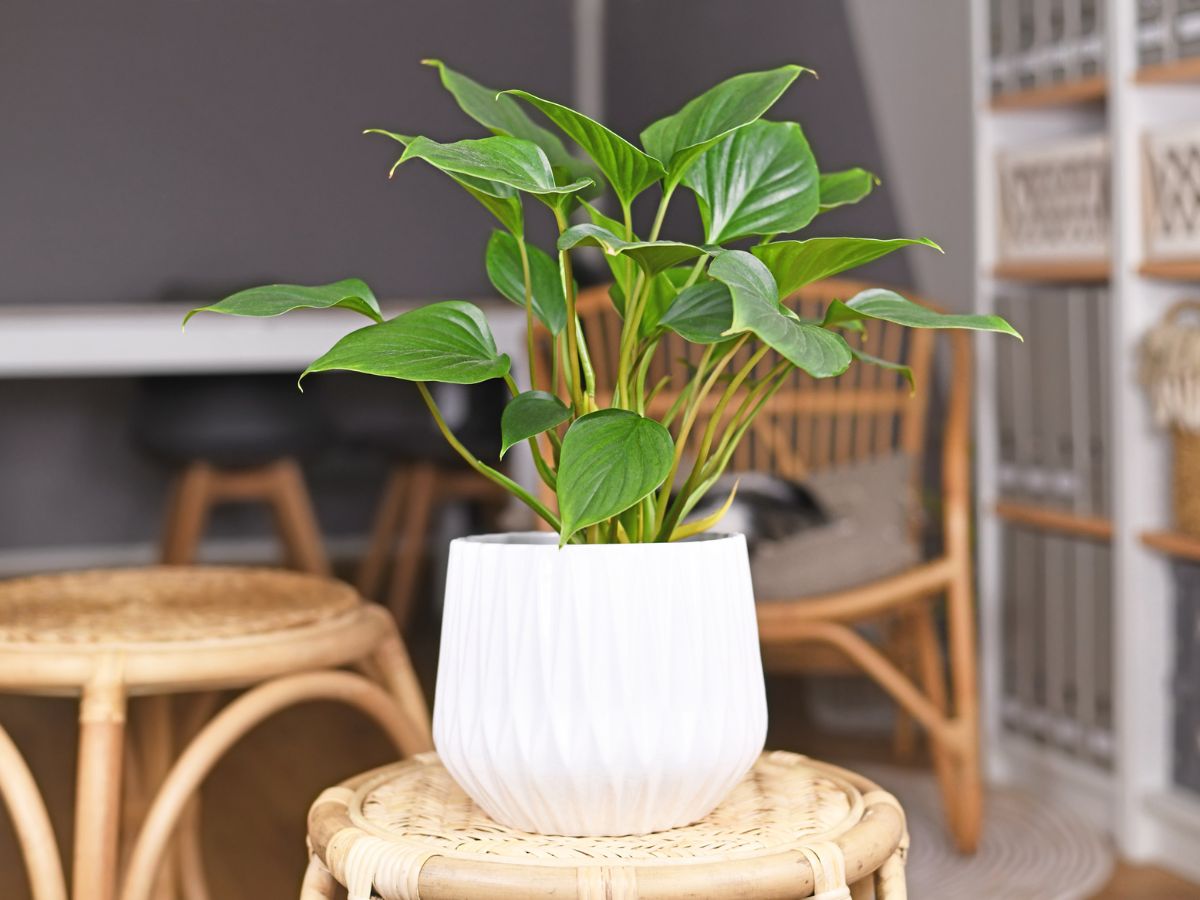
This amazing Homalomena has deep green, semi-heart-shaped leaves, and a natural sheen as if covered with wax. The ‘Emerald Gem’ has a completely tropical look and can be an exotic highlight in any room. Taking care of Homalomena ‘Emerald Gem’ is not difficult, the rules are the same as for other species. By the way, they look great not only indoors, but also on the terrace or even by the pool. Just make sure the plant is out of direct sunlight. And if you want to create the feeling of a real tropical jungle, then plant several Homalomenas ‘Emerald Gem’ flowers together.
Homalomena Red Velvet
It is a rather rare plant, and you may have to look for it well. It has no large, dark green, and red oval leaves.
Homalomena Camouflage
It has large (compared to many species) leaves and unusual color of spots of all shades of green, because of which the plant is compared to a military uniform.
Homalomena Selby
Unusual Homalomena flower, the leaves of which are decorated with delicate marks, as if they were painted by an artist. Despite its luxurious appearance, it is quite easy to care for, as Homalomena ‘Selby’ is resistant to pests and can grow well even in low light.
Homalomena Humilis
It is a quite rare plant and relatively new. The thick waxy leaves have an unusual varied pattern, ranging from pink to green.
Homalomena Insignis
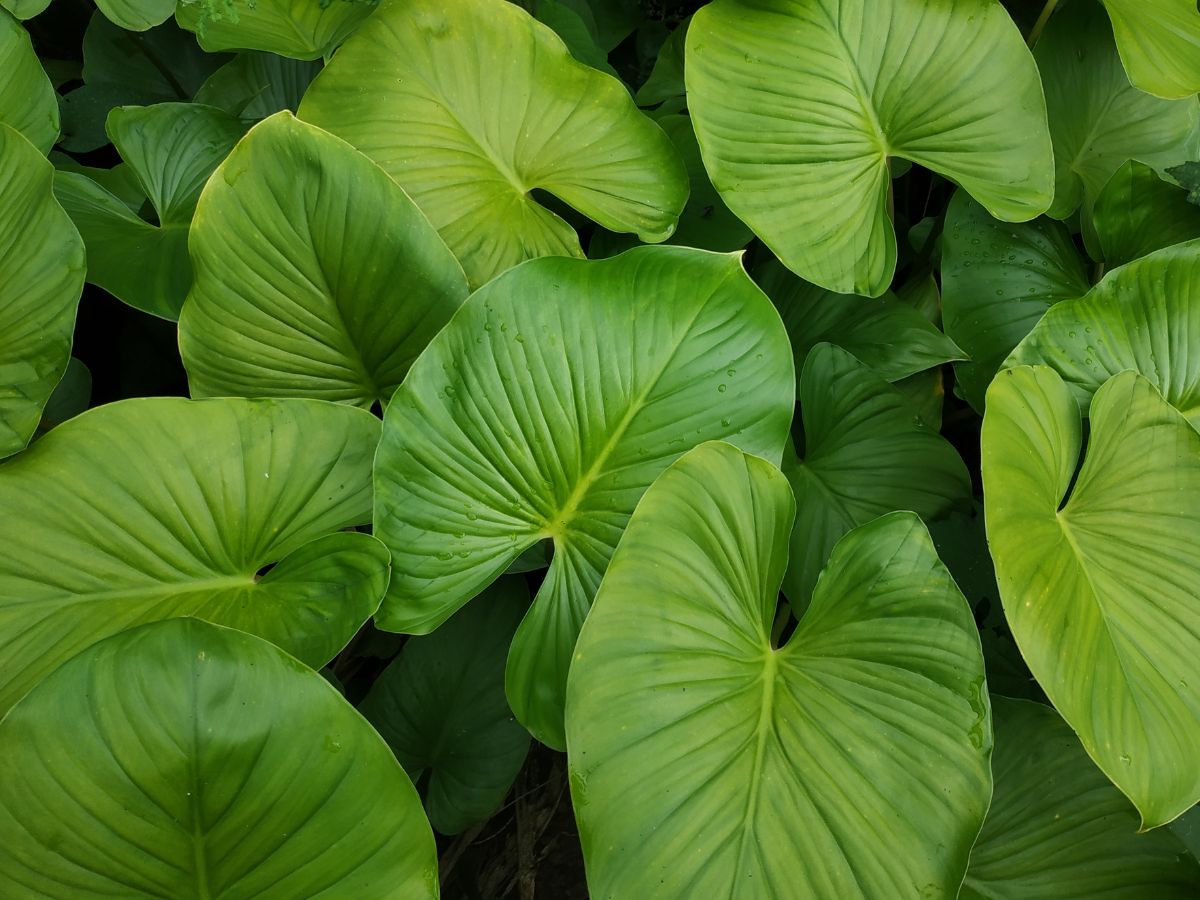
This plant boasts an unusual range of coral pinks and dark greens. Like the previous subspecies, the leaves of Homalomena Insignis are thick and waxy.
Homalomena Maggie or Queen of Hearts
This subtype is very similar to Homalomena ‘Emerald Gem’, only its leaves are slightly lighter. Unlike the previous two, it has glossy foliage.
Homalomena Purple Sword
This is another great option for exotic lovers. Homalomena ‘Purple Sword’ has beautifully mottled leaves with purple-burgundy undersides. The leaf blades are from heart-shaped to lance-shaped, completely covered with silvery-green dots.
Homalomena Black Metallic
Perhaps this is the most unusual representative of Homalomena of all of the above. Quite a rare plant that has dark green, almost black heart-shaped leaves. Despite its unusual appearance, the plant is not picky, and is resistant to diseases, and can grow well even in shade conditions.
Benefits of Homalomena as a Houseplant
Air Purifying Properties of Homalomena Plant
- Removes indoor air pollutants: Homalomena plants are known for their ability to purify indoor air by filtering out harmful pollutants such as formaldehyde, benzene, xylene, and toluene, which are commonly found in household items and furnishings.
- Enhances indoor air quality: Having Homalomena as a houseplant can help improve the air quality indoors, creating a healthier and more pleasant living environment.
- Provides natural air purification: Homalomena plants act as natural air purifiers, absorbing and neutralizing toxins through their leaves and roots, helping to reduce the toxic load in the air.
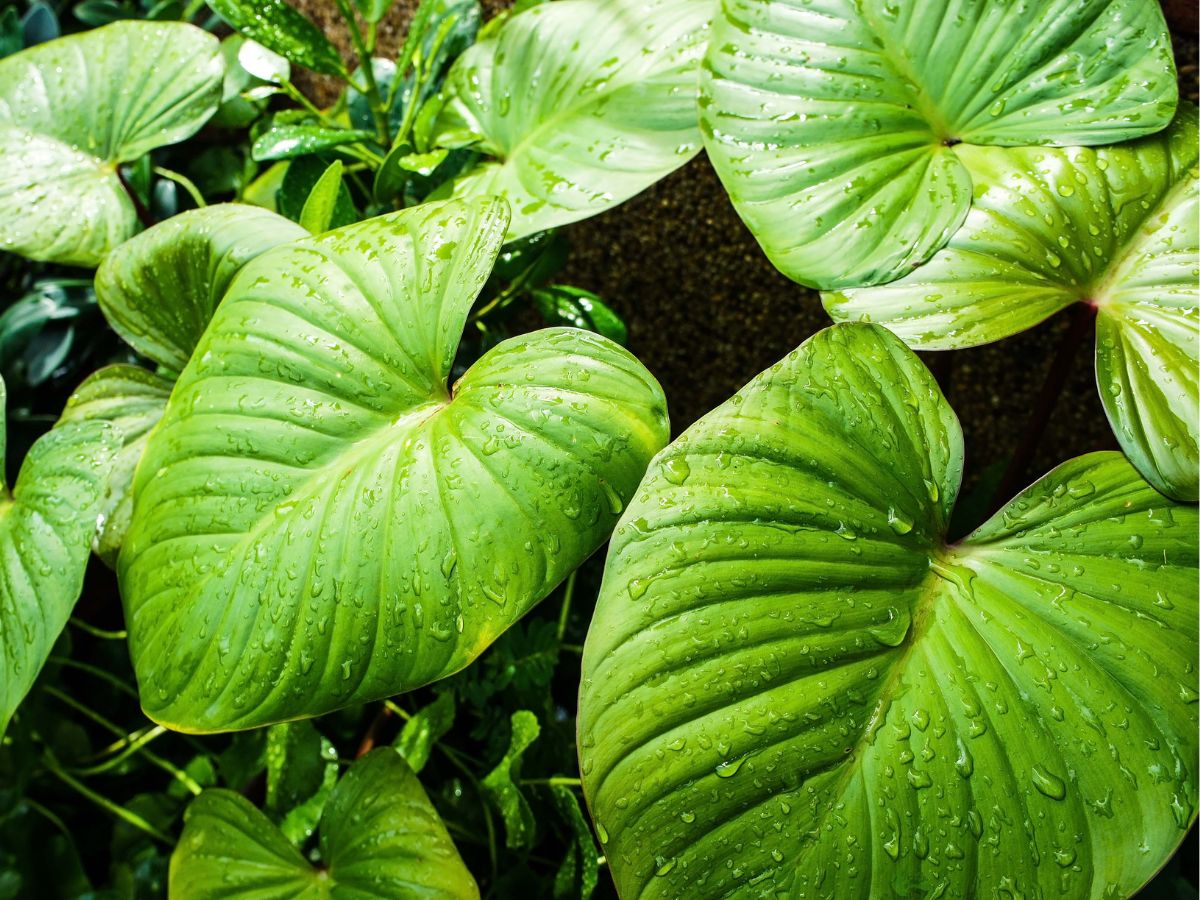
Health and Well-being Benefits of Having Homalomena as an Indoor Plant
- Boosts mood and reduces stress: Indoor plants, including Homalomena, have been shown to have positive effects on mood and mental well-being. Their presence can help reduce stress, anxiety, and promote relaxation.
- Enhances productivity and concentration: Studies have shown that having indoor plants in the living or working spaces, such as Homalomena, can improve concentration, creativity, and productivity, making it an ideal plant for home offices or study areas.
- Adds aesthetic appeal: Homalomena plants are prized for their lush foliage and attractive appearance, adding a touch of natural beauty and aesthetics to any indoor space, making it a visually appealing choice for interior decoration.
- Low-maintenance and easy to care for: Homalomena plants are relatively low-maintenance, making them suitable for busy individuals or those who are new to indoor gardening. They can thrive in a variety of indoor environments with minimal care, making them a convenient and hassle-free option for indoor plant enthusiasts.
Homalomena Care
Temperature
Homalomena reacts negatively to low temperatures, drafts, and airing during the cold season. In the summer and spring, the optimum temperature for this perennial is 22-26 °C. In winter, the temperature should not drop below 15 °C, otherwise, this beautiful plant can lose its decorative effect.
Lighting
The plant prefers bright, but diffused light. Direct sunlight is contraindicated for it, since its leaves may turn yellow in the open sun. But in the shade, the development of the plant freezes, and its color loses its brightness.
When placed in a room, window sills on the east or west side of the house are most suitable for Homalomena. On the south window, shading would be needed at noon hours, and on the north one – additional illumination with phyto lamps.
Watering
It is advisable to choose such a watering regime in which the soil in the pot would be constantly wet, but it is highly undesirable to flood the plant. An excess of moisture in the soil can lead to its acidification, which in turn can cause the active development of various fungal diseases, in particular, rhizome and leaf rot.
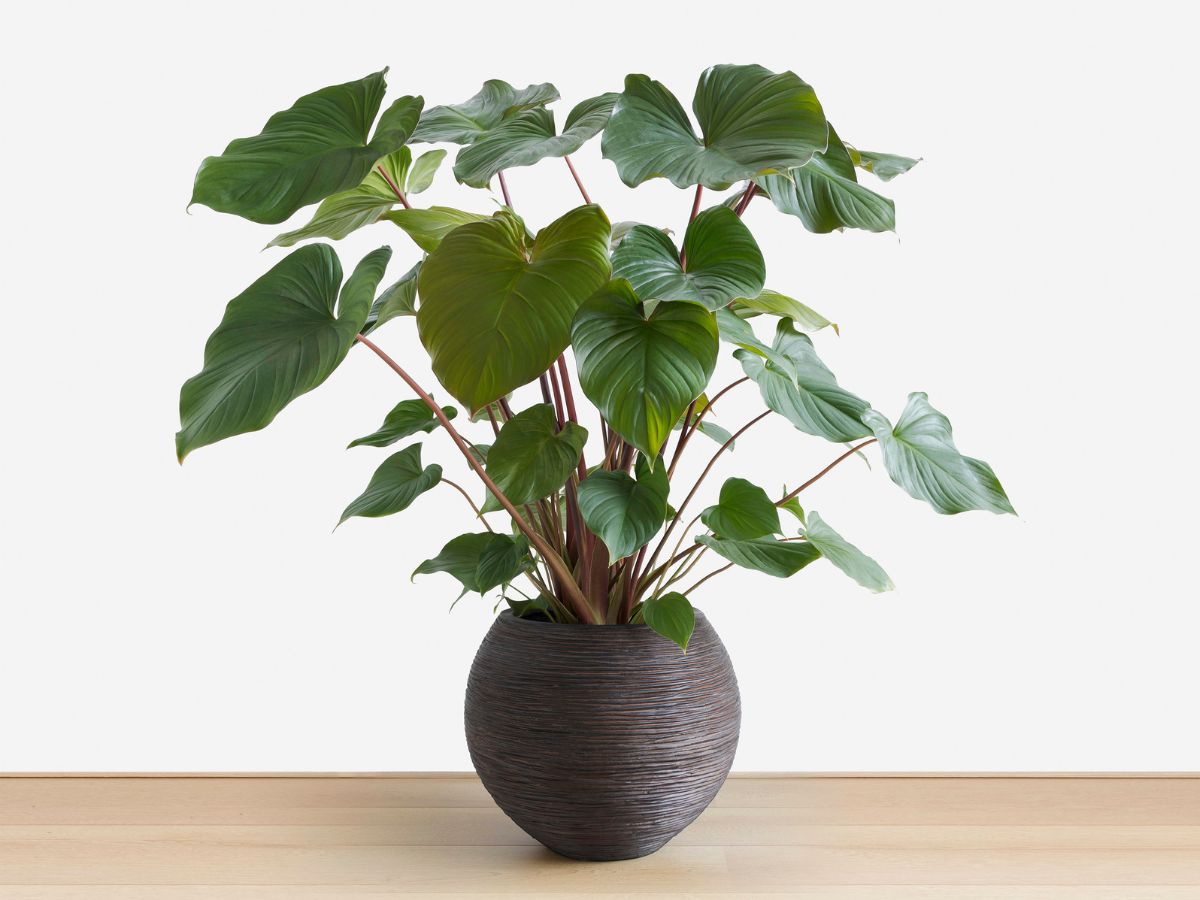
Air Humidity
To create favorable conditions for the growth and development of a plant, it is necessary to provide it with increased air humidity. To do this, you can spray the plant with a spray bottle a couple of times a week and wipe the leaves with a damp sponge. Another effective way is to put any moistened material (expanded clay or pebbles can be used) in a deep pallet and put a pot with a plant on top. In winter, if the plant is kept in rather low temperatures, it is not necessary to moisturize.
The Soil
The soil is required light, with a slightly acidic reaction. You can buy a special substrate for Araceae plants at a flower shop or prepare a soil mixture yourself. Mix equal proportions of peat, leafy soil, coniferous soil, and coarse sand. At the bottom of the planting container, be sure to lay a drainage layer that protects the root system from excess moisture.
Transfer
Homalomena boasts a fast-growing root system. In this regard, the plant transplant must be carried out immediately after the roots become cramped. While the plant is young, replanting can be carried out every year, and then the frequency of these procedures can be reduced to once in 2-3 years.
Pot Selection
The size of the pot for this plant is directly related to the size of the plant. Whenever you transplant a plant, use a pot slightly larger than the previous one. But keep in mind that if it is too spacious, it can lead to the formation of many daughter rosettes, which may make the plant not very attractive. The container can be made of ceramic or plastic, its bottom should have holes for drainage.
Fertilizer
You need to feed the plant once every 2-3 months. As a fertilizer, you can use a mineral complex for decorative leafy plants. Fertilizers for Araceae are also suitable.
Propagation
This plant can be multiplied very easily. It occurs by dividing the root system and daughter rosettes. The root system of overgrown flowers is divided into several parts. Sections must be disinfected with crushed charcoal. The cuttings are seated in separate containers. When propagating by the obtained daughter rosettes, the shoots are cut off from the main root. Then they are placed in glass jars with water until their roots appear. After they are treated with a growth stimulant and planted in the soil.
Common Pests and Diseases in Homalomena Plant
Pests that may affect Homalomena Plant
- Aphids: Aphids are small, sap-sucking insects that can infest Homalomena plants, causing leaf curling, yellowing, and distortion. They reproduce rapidly, and a heavy infestation can lead to stunted growth and reduced overall plant health.
- Mealybugs: Mealybugs are soft-bodied insects that feed on plant sap and produce a cottony white coating on the leaves and stems of Homalomena plants. This can weaken the plant, cause yellowing, and result in weak growth.
- Scale insects: Scale insects are small, immobile insects that attach themselves to the leaves and stem of Homalomena plants, sucking plant juices and causing yellowing, wilting, and stunted growth. They can be difficult to control as they are protected by a waxy coating, making them resistant to many insecticides.
- Spider mites: Spider mites are tiny pests that feed on plant sap and create webbing, leading to the yellowing, curling, and drying of leaves. They can multiply quickly in dry and warm conditions, and a severe infestation can weaken the plant and cause leaf drop.
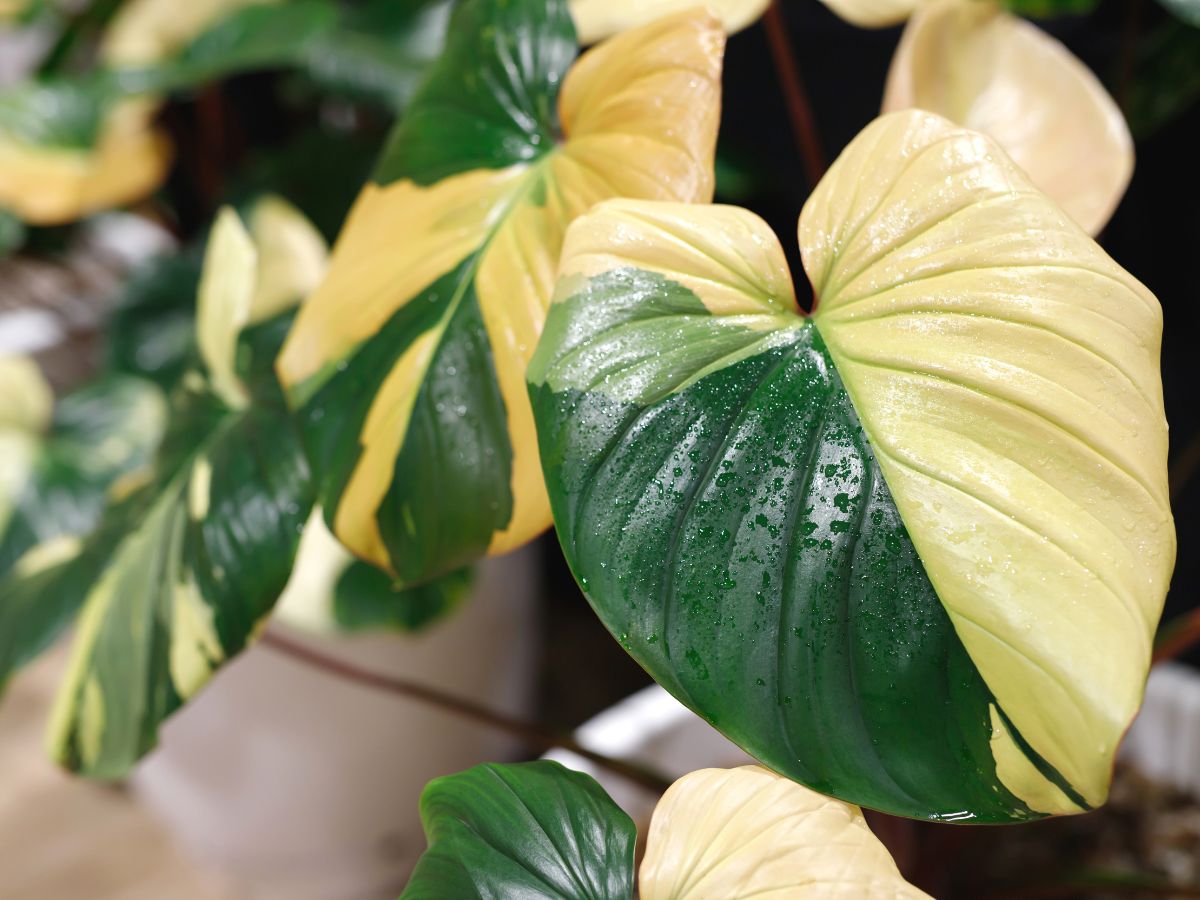
Common Diseases and Disorders that can affect Homalomena Plant
- Leaf spot diseases: Homalomena plants can be susceptible to leaf spot diseases caused by various fungal or bacterial pathogens. Symptoms include brown or black spots on the leaves, which can enlarge and eventually lead to leaf yellowing and defoliation.
- Root rot: Overwatering or poorly drained soil can lead to root rot in Homalomena plants. This can cause root damage, resulting in yellowing, wilting, and eventual death of the plant.
- Bacterial leaf blight: Bacterial leaf blight is a common disease that can affect Homalomena plants, causing water-soaked lesions on the leaves, which can turn brown or black and cause leaf yellowing and wilting.
Prevention and Treatment Options for Pest and Disease Management
- Maintain good plant hygiene: Regularly remove dead leaves, debris, and weeds from around the Homalomena plant to prevent pests and diseases from gaining a foothold.
- Avoid overwatering: Homalomena plants prefer moist but not waterlogged soil. Allow the top inch of the soil to dry out before watering, and ensure good drainage to prevent root rot.
- Monitor for pests: Regularly inspect the leaves, stems, and undersides of leaves for signs of pests. If detected, use natural or chemical controls such as insecticidal soap, neem oil, or horticultural oils to treat infestations.
- Provide proper growing conditions: Ensure that Homalomena plants are grown in the appropriate lighting, temperature, and humidity conditions to promote healthy growth and reduce stress, which can make them more susceptible to pests and diseases.
- Use disease-resistant cultivars: Choose disease-resistant cultivars of Homalomena plants when available to reduce the risk of diseases.
- Seek professional help: If a pest or disease infestation becomes severe or difficult to manage, consult with a professional horticulturist or plant care expert for proper diagnosis and treatment options.
Conclusion
Homalomena is a beautiful and low-maintenance houseplant that can thrive indoors with minimal care. Its unique foliage and air-purifying properties make it a popular choice for indoor gardens and offices. The taxonomy and botanical description of Homalomena provide insights into its classification and physical characteristics, while its benefits as a houseplant include its ability to purify the air and promote health and well-being.
However, like any other plant, Homalomena is susceptible to pests and diseases. Being aware of common pests such as aphids, mealybugs, scale insects, and spider mites, as well as diseases like leaf spot and bacterial leaf blight, is important for proper management. By practicing good plant hygiene, avoiding overwatering, monitoring for pests, providing suitable growing conditions, and using disease-resistant cultivars, it is possible to prevent and manage pest and disease issues effectively.
In conclusion, Homalomena is a versatile and attractive houseplant that can provide numerous benefits in indoor settings. With proper care and attention to pest and disease management, Homalomena can thrive and enhance the aesthetic and health of any indoor space.


